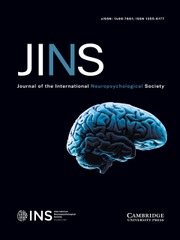No CrossRef data available.
Article contents
Are there associations between Executive Functions and Theory of Mind in attention deficit hyperactivity disorder? Results from a systematic review with meta-analysis
Published online by Cambridge University Press: 22 May 2025
Abstract
Deficits in Executive Function (EF) and Theory of Mind (ToM) are common and significant in attention deficit hyperactivity disorder (ADHD), impacting self-regulation and social interaction. The nature of ToM deficits is believed to be partially associated with preexisting deficits in other core cognitive domains of ADHD, such as EF, which are essential for making mental inferences, especially complex ones. Evaluating these associations at a meta-analytic level is relevant.
To conduct a systematic literature review followed by a meta-analysis to identify potential associations between EF and ToM among individuals with ADHD and their healthy counterparts, considering different developmental stages.
A systematic review was conducted in seven different databases. The methodological quality of the studies was assessed using the Newcastle-Ottawa Scale. The meta-analytic measurement was estimated with the correlation coefficient as the outcome. Due to the presence of heterogeneity, a random-effects model was adopted. Independent meta-analyses were conducted for different EF subdomains and ADHD and healthy control groups. Subgroup analyses were performed to examine the influence of age on the outcome of interest.
Fifteen studies were analyzed. Moderate associations were found when comparing EF and ToM between individuals with ADHD (0.20–0.38) and healthy subjects (0.02–0.40). No significant differences were found between child and adult samples (p > 0.20).
The association between EF and ToM was significant, with a moderate effect size, although no significant differences were found according to age, the presence of ADHD, or EF subdomains. Future research is suggested to expand the age groups and overcome the methodological limitations indicated in this review.
Keywords
Information
- Type
- Critical Review
- Information
- Journal of the International Neuropsychological Society , Volume 31 , Issue 3 , March 2025 , pp. 267 - 283
- Copyright
- © The Author(s), 2025. Published by Cambridge University Press on behalf of International Neuropsychological Society

